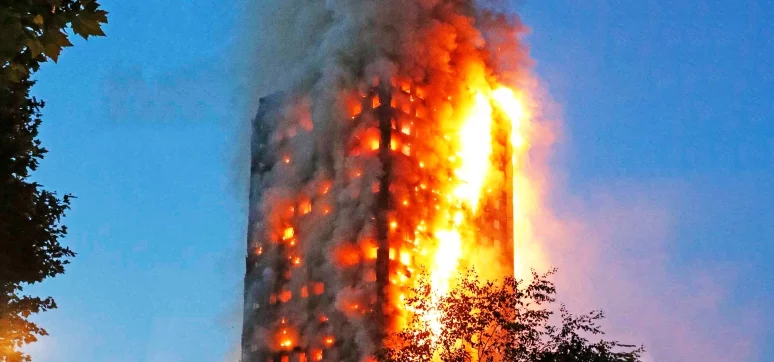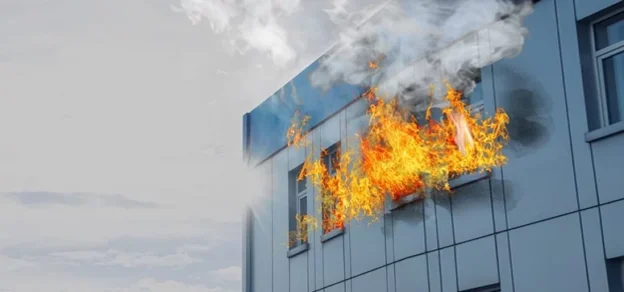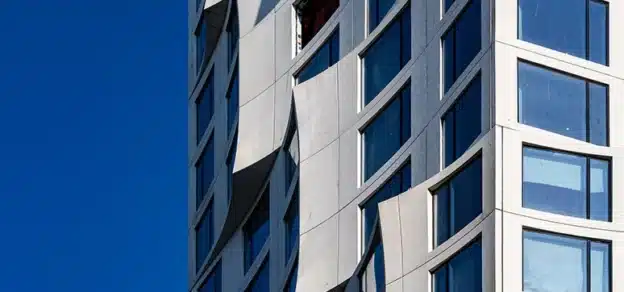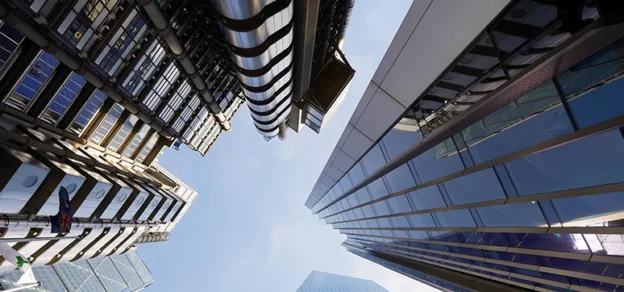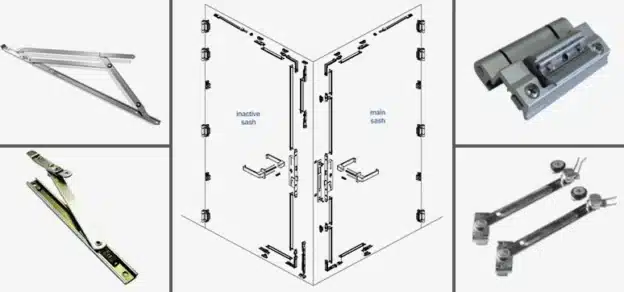Due to recent fire-related disasters globally, façades have attracted public attention, and façade fire safety is now being recognised as one of the most crucial aspects at the forefront of fire and life safety engineering design and construction. In order to discuss façade fire safety and protection, the basic definition of fire needs to be noted.

Fire is the rapid oxidation of a material in the exothermic chemical process of combustion, releasing light, heat, and smoke. It needs oxygen, heat, fuel, and a chain reaction involving the three. This is better illustrated with the fire triangle.
- Fuel: Anything that could burn including combustible cladding
- Heat: A source of ignition that would reach a high enough temperature to ignite the fuel (e.g., electrical hazards)
- Oxygen: Necessary for the fire to start and propagate, but this is not something we focus on in the context of façades because they are open to the atmosphere
What are Façade Fires and their Most Common Causes?

Most commonly, fires start from inside the building and travel to the exterior, following oxygen and fuel, and when a building has a large amount of readily combustible façade material that will quickly ignite and spread along the exterior of the building. We have seen this in the Grenfell Tower in London (14 June 2017), where the fire started from a freezer on the fourth floor, apartment 16, and traveled to the exterior of the building.
Due in part to the use of aluminum composite material (ACM), which is made from polyethylene, sandwiched by two thin sheets of aluminum, and multiple other materials and factors, this cladding burned easily and quickly, engulfing the 67.3 m tall tower within approximately three hours, which is quite slow, considering other façade fires that envelopes façades within minutes. However, that is the difference between the leapfrog effect and a façade fire. Leapfrogging or leapfrog effect is when a fire breaks out from one floor and travels past the façade vertically and into another floor, and so on. A façade fire on the other hand breaks out once and rapidly consumes the whole façade of the building.
As a result of the redesign process of Grenfell Tower, the cladding material installed actually promoted the spread of fire. It, therefore, did not meet England and Wales Building Regulations, Approved Document B, Schedule 1, which stipulated that the building façade shall adequately resist the spread of fire, taking into consideration, the height, occupancy classification, and position of the building. Of course, this is only one part of the chain reaction that caused the Grenfell Tower disaster.
There are other common causes of fires, such as faulty electrical components, cooking, smoking, and others that are less common as a source of ignition such as exterior open-fire heating devices provided at restaurants and cafes during the winter season.
How to Mitigate Façade Fires?

Now that we understand what fire is and how fires need three main components to start a rapid oxidation process and the significance of façade fire safety with the Grenfell Tower fire, let’s discuss what is currently being done in the industry to mitigate façade fires.
First, during the conceptualising of a building, structure, or development it goes through a design stage where bases of design such as regulatory codes and international standards are noted for the specific asset, these codes and standards are then used to provide the minimum criteria for the fire and life safety design, which include façade material criteria. These are coordinated with the façade team and architect to ensure design intent is being met.
In Saudi Arabia, the Saudi Building Code and the Saudi Fire Code 2018 Edition are the regulatory codes, which are based on the International Building Code and International Fire Code 2015 Edition, respectively. The SBC and SFC provide requirements on façade material rating based on the construction type of the asset and testing criteria.

One of the most common and significant is the NFPA 285: Standard Fire Test Method for Evaluation of Fire Propagation Characteristics of Exterior Wall Assemblies Containing Combustible Components, which is invoked when significant quantities of the façade material (such as panels, siding, and insulation for example) are not non-combustible. It is worth noting that the SBC and SFC do allow exemptions to waive testing, provided that the material used meets set performance criteria referenced in the code and similarly is installed below certain heights from grade.
Therefore, for a new asset and/ or development, it is relatively straightforward to design out the risk of façade fires using code compliance, which in most cases of high-rise buildings are required to be provided with tested, or non-combustible material. However, when there is an existing building with combustible façade material installed, the material and operational aspects of such a building are investigated in order to limit any causes of fires. The treatment of the actual façade material, by replacement, partial replacement, or other means, is a subject within itself (see Volume 1, Issue 1, and Volume 2, Issue 1 in particular for more information).
However, in façade fire performance, operational aspects are often overlooked. For example, to mitigate fire risks for a high-rise business tower with substantial combustible façade material, the following approach to operational aspects may be considered:
- The risk of breaking out of a compartment can be reduced using fire protection systems (sprinklers / active protection) and ensuring that they are comprehensive, maintained, and working robustly.
- Similarly, fire sources in close proximity to the façade (ignition risks) must be considered – potentially by isolation, replacement, or removal.
- Passive protection strategies and components, such as fire doors, must be robustly maintained.
- Means of egress within the building are defined and clear, to allow occupants to evacuate in a timely manner.
- There is an appropriate procedure to notify all occupants within the structure to evacuate.
Following the above approach will provide insight into the main active protection components and aspects of fire and life safety such as the proper maintenance of automatic sprinkler systems, fire hose reels, and fire extinguishers. Passive protection such as main building components impeding fire spread, robust means of egress, and evacuation procedure implementation, mitigating the risk of fire specifically on the occupants first and property second. Perimeter Fire Barrier Systems Façades that are themselves fire resistance-rated (i.e. preventing the fire from moving from one compartment to another) are relatively uncommon (one notable exception being basement car park lift lobby glazing).

Consequently, in the design and construction of façade fire safety, the main common component of fire resistance is the perimeter fire stop. This is a special linear joint seal that prevents the passage of flame and hot gasses through the gap between the interior surface of the façade assembly and the adjacent edge of the floor. The appropriate use of the perimeter fire stop will provide the required protection to ensure flame and smoke are prevented from moving through compartments.
It is important that other components of the façade, such as the spandrel panel, do not lose their integrity during a fire; otherwise, the applied seal will lose its preventative properties, and flame and smoke will spread through the façade voids. Similarly, it is important not to overlook vertical seals, such as those required between the shared walls of individual dwellings (apartments) and the façade. Another commonly overlooked firestop is the cavity barrier – referred to as the fire break in the IFC and SBC. These are essential to prevent smoke movement in cavities behind or within façades. Examples may include the cavity between the façade and a shear wall.
Conclusion
Unfortunately, there have been more than enough disasters globally that demonstrate the seriousness of façade fire safety. Therefore project teams must design out or mitigate fire spread based on the specific building characteristics and during the implementation process. Proper design and installation of required perimeter fire stopping and cavity barriers is key to providing the required protection from flame and smoke moving through compartments.
Additionally, when remediating existing buildings, the importance of the operational aspects of an asset is often not considered. However, ensuring that an asset implements a robust fire and life safety operational plan that includes periodic inspection of all active and passive fire protection systems, safeguards all components of the means of egress, and implements a robust occupants’ notification system is key to maintaining a safe environment to occupants and a protected asset.
REFERENCES
1. NFPA, Reporter’s Guide: All About Fire, National Fire Protection Association, accessed 14 May 2022.
2. History.com Editors, Grenfell Tower fire kills 72 in London, HISTORY, published 7 September 2018, accessed 14 May 2022.
3. Symodns, Tom. Grenfell Tower inquiry: 9 things we now know about the cladding, BBC News, published 23 March 2021, accessed 14 May 2022.
4. Moore-Bick, Sir Martin (2019), Grenfell Tower Inquiry, Phase 1 Report, 30 October, HMSO, ISBN 978-1-5286-1602-7.
